#puntius
Photo
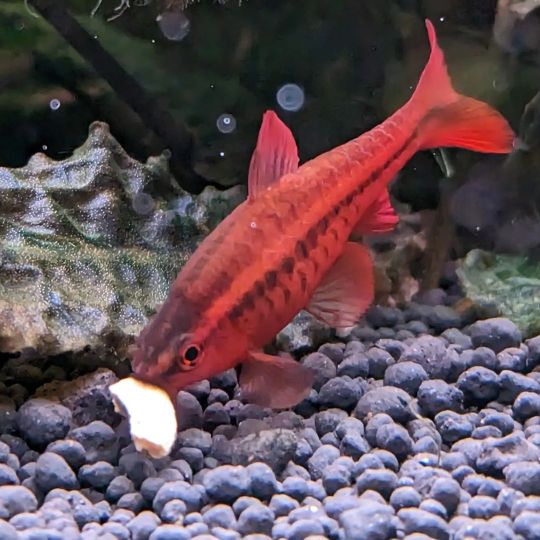
Puntius Titteya 🍒 . . . . . . . . . #vekkvlog #cherrybarb #barb #asianbiotope #biotope #biotopeaquariums #aquarium #aquariumhobby #aquariumtank #acquariofilia #acquario #aquascape #instaaquarium #desmopumtius #ciliegie #natureaquarium #titteya #barbus #puntius #puntiustitteya #aquariumlife #plants #aquariumplants #jblproscape #barbociliegia #twinstar #fishtank #aquariumfish #cyprinidae #freshwater (presso Padua, Italy) https://www.instagram.com/p/CnvI_clI8lT/?igshid=NGJjMDIxMWI=
#vekkvlog#cherrybarb#barb#asianbiotope#biotope#biotopeaquariums#aquarium#aquariumhobby#aquariumtank#acquariofilia#acquario#aquascape#instaaquarium#desmopumtius#ciliegie#natureaquarium#titteya#barbus#puntius#puntiustitteya#aquariumlife#plants#aquariumplants#jblproscape#barbociliegia#twinstar#fishtank#aquariumfish#cyprinidae#freshwater
1 note
·
View note
Text

friend: draw a cherry barb
me: u got it, boss
206 notes
·
View notes
Text
Guide complet sur le Barbus Cerise (Puntius titteya)
En aquariophilie, certains poissons se distinguent par leur beauté éclatante et leur nature paisible. Le barbus cerise, ou Puntius titteya, est l’un de ces joyaux. Originaire des eaux douces et cristallines du Sri Lanka, ce petit poisson tropical captive les cœurs des aquariophiles du monde entier. Avec sa palette de couleurs vives et son comportement grégaire, il ajoute une touche de dynamisme…
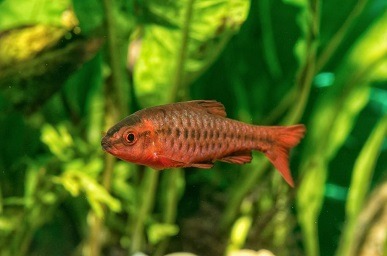
View On WordPress
0 notes
Text
so our cherry barbs highkey imitate the non-barb fish in our tank. like back when we had Simon (may his memory be a blessing) they nibbled at algae the way he did. and now that we have the loach it’s gone into total overdrive.
they’re swimming with a primarily tail-based wiggle instead of fin-based thrust. they’re still nibbling algae, but now they’re doing it by hanging perpendicular from leaves like loach do. they’ve started feeding from the substrate, and a few are even plowing nose-first into it and scooting along on their bellies, just like the loach.
#subbyp’s fishious little tank#cherry barb#puntius titteya#barbus titteya#zebra loach#botia striata#is this like…..a thing?#bc neither fiancée nor I have found anyone else online talking about it
1 note
·
View note
Note
beloved friend can you assign me a fish
i can <3 and i will assign youuu...

the cherry barb! (Puntius titteya)
it is a tropical freshwater fish very commonly found in hobbyist aquariums, and must typically be kept in groups of at least 5 other cherry barbs. they're very common due to their beautiful and unique colorations, and are relatively easy to tend to due to what little they demand other than the presence of other fish
7 notes
·
View notes
Text
Silver Bar Fish: A Unique Aquatic Beauty
In the world of aquatic wonders, the Silver Bar Fish stands out as a captivating species that enchants both seasoned aquarists and casual observers alike. Scientifically known as Puntius gonionotus, this fish boasts a stunning appearance characterized by its sleek silver body adorned with distinctive horizontal bars. Native to Southeast Asia, particularly Thailand, Cambodia, and Vietnam, the Silver Bar Fish is revered not only for its aesthetic appeal but also for its peaceful demeanor and ease of care, making it a popular choice among fish enthusiasts.
One of the most striking features of the Silver Bar Fish is its shimmering silver scales, which reflect light in mesmerizing patterns as it glides gracefully through the water. These scales, combined with its elongated body and prominent fins, create a captivating sight in any aquarium setting. Whether kept in a community tank or as the centerpiece of a species-specific setup, this fish adds an element of elegance and tranquility to its environment.
In addition to its visual allure, the Silver Bar Fish is known for its gentle temperament, making it an ideal choice for community tanks alongside other peaceful species. Its amiable nature extends to interactions with other fish, minimizing the likelihood of aggression or territorial behavior. This makes it suitable for novice aquarists or those looking to create harmonious aquatic ecosystems.
When it comes to care requirements, the Silver Bar Fish is relatively undemanding, thriving in a well-maintained aquarium with ample space for swimming and hiding. A balanced diet consisting of high-quality flake or pellet food supplemented with occasional treats like live or frozen brine shrimp and bloodworms ensures optimal health and vibrancy. These Silver Bar Fish are also known to appreciate a planted aquarium with plenty of vegetation, which mimics their natural habitat and provides additional hiding spots.
Interestingly, the Silver Bar Fish holds cultural significance in certain regions where it is found. In Thailand, for example, it is considered auspicious and is sometimes referred to as the "silver ganpati idol" due to its resemblance to the revered elephant-headed deity, Lord Ganesha. This cultural symbolism adds another layer of fascination to an already captivating species, further enhancing its appeal to enthusiasts worldwide.
In conclusion, the Silver Bar Fish is a truly remarkable aquatic creature that combines beauty, tranquility, and cultural significance in one captivating package. Whether admired for its shimmering scales, peaceful demeanor, or symbolic value, this species continues to enchant and inspire aquarists around the globe. Whether you're a seasoned hobbyist or a newcomer to the world of fishkeeping, the Silver Bar Fish is undoubtedly a species worth considering for your aquatic endeavors.
0 notes
Text
Black ruby barb
Pethia nigrofasciata is a Ceylonese carp, traded as the black ruby barb, but also known as the purplehead barb. Historically the species was regarded as belonging to Barbus or Puntius. It grows to about 6.5 centimeters, or about 2 and a 1/2 inches in length. It is native to winding, elevated forest streams, above flood level, from the Kelani to Nilwala basins in the southwest of the island. The waters in such streams are on the soft, acidic side, and are clear, cool, and shaded.
The fish mainly preys on the aquatic larvae of chironomid flies, and ephemerooteran nymphs, as well as green algae and diatoms, and for that reason belongs to the ecological guild of fish that feed near the stream bottom. The mouth of this species is subterminal, befitting such a benthic feeder, and its gill rakers are widely spaced. Other cyprinid species sharing its habitat, consume prey in midwater, or from the water surface. P. nigrofasciata is also distinct by its preference for shallow water, and the fringes of branch and root systems.
P. nigrofasciata in fact has specific habitat requirements, living where the bottom is sandy with some rocks or submerged wood, and maybe a few clumps of macrophytes, typically Aponogeton. Though the forest shades the streams, P. nigrofasciata prefers the full sun, being recorded in waters with a temperture of 25 or 26 degrees centigrade. Such habitats also have a pH of about 6.
In the aquarium, P. nigrolibeatus appreciates some degree of water movement, reflecting its wild origins as a stream fish, living where the glow is 2-15 cubic meters per minute. Although where the flow is high, these carp seem to rely on objects that break the current, so in the aquarium, the flow should not be at the upper end of this velocity. It is a peaceful community fish, and also a schooling species, that must be kept in some numbers. Its diet is omnivorous, and feeding is not difficult.
0 notes
Link
1 note
·
View note
Text
The History of Ranisthan (Part 1)
It is uncertain who were the earliest residents of Raz Tapu Samal. One claim is that it's Puntiu (Pwntjw) people from the Land of Punt, a kingdom southeast of Egypt, also known as Ta Netjer, the Land of God, and who referred to themselves as Nouti people (or the Netjeri), the people of God. Their rulers supposedly were the legendary and mythical King Noynti Romi and his wife Ouru Kheriaha di-Kesromi (di-Kesromi also being the name of their capital city now known as Ksar Arrum and located on the eastern border of Zabulgarh in northwestern Ranisthan, which is officially in the realm of Queen Aditi Bintulama, a hereditary, so-called 'Gold Standard', non-ruling minor queen but militarily one of the most powerful queens in Ranisthan).
Others claim the original residents were the 'Adites under their King 'Ad-Samaw'al Binnuh bin Tulama of 'Ad. The aforementioned Queen Aditi is a direct descendant of this king, though, like with King Noynti, there were initial doubts, historically, regarding his existence.
Further suggestions point to the Afur tribe as possible initial residents of Raz Tapu Samal. The Afur are a tribe supposedly related to the Afar and Oromo (called Oromoo in Ranisthan). The ancient Afur queendom Affará Númu (aka Affura), still exists today but as the Tetrarchy of Ranifur (sometimes called Ranifour), ruled by four queens, the Furey Sisters, supposedly direct descendants of the former rulers. This is disputed by Rev. Dr. Qallitti Uuma, leader of the Waaqeffanna Church of the One God in Gallaland, Atarasar, Union of Qara, Ranisthan. Rev. Uuma (aka Orma Gurracha) dismisses the sisters' supposed lineage because they are not only white, but according to her Irish (Travellers actually much like the ancestors of the Afur tribe). However, the sisters did not claim or take the so-called Tetrathrones by force. They inherited it from their mother and aunts, and the 12 Ruling Queens, Queen Qara before them, the Mahrah Sultanate before that, has never expressed doubts regarding the Furey inheritance. The current queens have also submitted documentation, provided by archaeologists and researchers, Rev. Dr. Binyamin Navarra, Prof. I. B. D. M. Foote and Prof. Regan Szekszárd-Király (all highly respected by the political, judicial and royal rulers of Ranisthan) that support their right to the Ranifur thrones and may also link them with legendary king Noynti Romi (aka Nounte/Nouti/Noute Rom).
Rev. Uuma, who is of Oromoo heritage, thinks the Oromo were the original residents but the Oromo are not mentioned in Ranisthan history until the 19th century. She, however, thinks the Afur were Oromoo. According to research done by the three professors mentioned above, Rev. Navarra has come to the conclusion that the above-mentioned tribes were most likely related to each other but that none of them were the original residents of Raz Tapu Samal.
Prof. Navarra believed that all of the above tribes migrated to Raz Tapu Samal from the afore-mentioned Land of Punt, specifically from the region now known as Djibouti. The professor's colleagues, husband and wife egyptologists Sir Walter Bartonstone Scott-Campbell and Lady Jane "John" Patterson-Scott-Campbell, initially confirmed this. However, they soon claimed upon further research that Djibouti was not the origin city but the northwestern Arabian peninsula. The Scott-Campbells identified these people as a nomadic, Thamudic-speaking tribe, who passed through Djibouti, Oman and Yemen to Raz Tapu, where they had a long time ago established a colony, calling the island Baclanaza. Prof. Navarra rubbished this second theory. [NB. Both husband and wife were once students of Prof. Navarra and his first wife anthropologist Prof. Candida Xu Verzaubert and their friendship endured rumours of affairs between Prof. Navarra and Lady Jane, all parties knowing they were false. All her extramarital affairs were with women]. Prof. Navarra insisted that the Scott-Campbells misread a text, referring to Baclanaza as 'inland', as 'island'. The Scott-Campbells eventually altered their theories, identifying the tribe as Old Arabic speaking Nabataeans and their date of arrival on Raz Tapu as sometime between the third and sixth centuries. They claimed King Noynti Romi was their leader, saying inscriptions that said NOYTE was a misspelling of NBYT, Taymanitic inscription Nabayataya (Nabataean), and the Nouti people were really Nabataeans and of the christian faith. Prof. Navarra contradicted that though as the languages associated with King Noynti is Coptic (specifically Akhmimic) as well as Greek. Rev. Dr. Qallitti Uuma thought the egyptologist Brit and his Aussie wife should stick to field of speciality: Egypt.
Prof. Navarra, however, partly agreed with the timeline and a possible Thamud and later Nabataean occupancy of the island. He believed King Noynti (his existence was later documented and proven) and his Nouti people arrived in the island in 3rd Century. They were not Christians. They were followed by the 'Adites and then the Afur, and possibly somewhere in between, or after, the Thamuds, as supposedly evidenced by the city Mada'in Matasalih, in Moghudesh (named for a possible Thamud ruler Matasalih III or Matusalih III or Madasalih, which is also an alternative name for the city. It is however sometimes linked with with a later period, a later non-Thamud ruler and with the so-called 'twin' city of Mada'in Hagara also known as Al-Hajar, Al-Hagra or simply Hagra). The supposed Romans or Greco-Romans, described as such in all Ranisthan history books, including the revised one by Prof. Foote, with their rulers being King Malichus lll Soter and Queen Shaqeela Hagara (aka Shaqilath IV or Shaqilath Hagru), were most likely Nabataeans and may have included some Thamuds, both groups, though not Romans, representing Rome as allies and auxiliaries respectively.
GALLERY

King Noynti Romi (aka Nounte/Nouti/Noute Rom). The character in his name looking like a "Y" is actually pronounced as a "U", according to Prof. Navarra, which would make his name "Nounte", as inscribed on the ancient mural found in the ruins of Erum. His second name also appears as "Rom" and not "Romi", which indicates a link, Prof. Navarra thinks, to the Romani and not Rome, the latter an inconceivable conception by an ignorant few. [I. B. D. M. Foote ( 1968)]
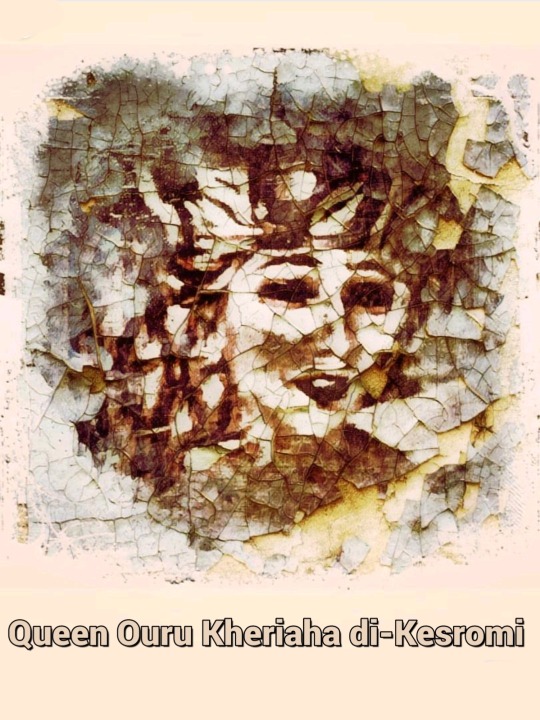
Queen Ouru Kheriaha di-Kesromi, wife of King Nounte Rom. Like most of the queens in the history of Ranisthan and Raz Tapu, she dominated her husband and was the real ruler of Raz Tapu Samal. Prof. Navarra eventually changed his opinion and believed the 'Adites were in Raz Tapu before King Nounte's conquest and that Queen Ouru was an 'Adite, who King Nounte eventually married. Based on this, he thinks that the so-called Rape of the Ar-Razi Women (by King Nounte and his army), depicted so many times in the ruins of Erum, is really the Rape of the 'Adite Royal Women and was only perpetuated by King Nounte and members of his court and not by the army and not on the mass population. However, based on oral history provided to me [Prof. Foote] by minor, non-ruling Queen Bilqis* and to both myself and Prof. Navarra, among others, by Ranisthani Oral Historian "Mukha", Prof. Navarra is not discounting that it is Ethiopian Sabaeans, who may have been the victims of the rape, and also, that Queen Ouru may have actually been an Ethiopian Sabaean. Regardless of that, Prof. Navarra believes the entire population of Raz Tapu was connected to each other or related in some way due to an intermingling of tribes over approximately 1000 years beginning some where about 500BCE and concluding between 400 to 500CE. [I. B. D. M. Foote ( 1968)]


*NB. It should be noted that my paternal grandfather, the above-mentioned Prof. Foote was the husband of Queen Bilqis even though he was already legally married and continued to be married to my grandmother, abandoning her in Bousy Island from the late 1960's to early 1970's. He returned to her and to Bousy Island in 1972 at the beginning of the Great Evacuation in Ranisthan. Queen Bilqis was granted "tenancy" of Bousy Island in 1974 by the elderly Graend Dame Cerisse of Bat Island, who owned the island, after the death of the former tenant the so-called Queen Solms. In the next year, Queen Bilqis, after long negotiations, was allowed to buy the island for an undisclosed sum. She changed nothing about the so-called "Island of Pubs", except to stop collecting taxes from the residents and also allowing them to own instead of leasing their properties. Other than its pubs, Bousy Island is famous for its former use as a departure point for one of the ex-Nazis ratlines to Argentina, and the assasination of former Nazi GenMaj. Otmar Zar, which ended the ratlines originating there. It is also the home of former Nazi Admiral (turned British spy) Euric Erbgraf von Schauenburg-Schloss and the home of filmmaker and journalist Circe-Lutece Nepteune (second home after her marriage to Bishop Mathurin of Baileywich Island and it is also the birthplace of her former lover, author Jenny Solmos). It also supposedly my birthplace, according to my parents (though all records indicate I was born in Andulasia, Spain). My grandparents continued to lived there and my grandfather continued illegally to be the husband of my grandmother as well as Queen Bilqis (who seemed to genuinely love him and also seem to have eome sort of spell over him). By the way, she never used the title 'Queen' after her arrival in Bousy Island, though the residents continued to address her as such. In fact, none of the thirty-odd Ranisthani queens should have been using that title from before 1950 but they continued to do so for the next 25 years. [Ibi Foote (2023)]

The Most Rev. Dr. Qallitti Uuma Orma Gurracha, Archbishop of the Waaqeffanna Church of the One God, headquartered in Gallaland, Atarasar, Union of Qara, Ranisthan. She is also a certified antiquarian and self-styled 'amateur historian'.




Egyptologists Sir Walter Bartonstone Scott-Campbell and Lady Jane "John" Patterson-Scott-Campbell.
#Ranisthan#History#Ranisthan-history#Navarra#Foote#Scott-Campbell#Archaeology#Archaeologist#Research#Egyptologist#Waaqeffafanna#Oromo#Afar#Nounte#Noynti#Punt#Ouru
0 notes
Text
Molecular phylogeny and systematics of the South Asian freshwater-fish genus Puntius (Teleostei: Cyprinidae)
Published 4th July 2023
Investigation on the interrelationships of the species of Puntius in Sri Lanka using molecular phylogeny.

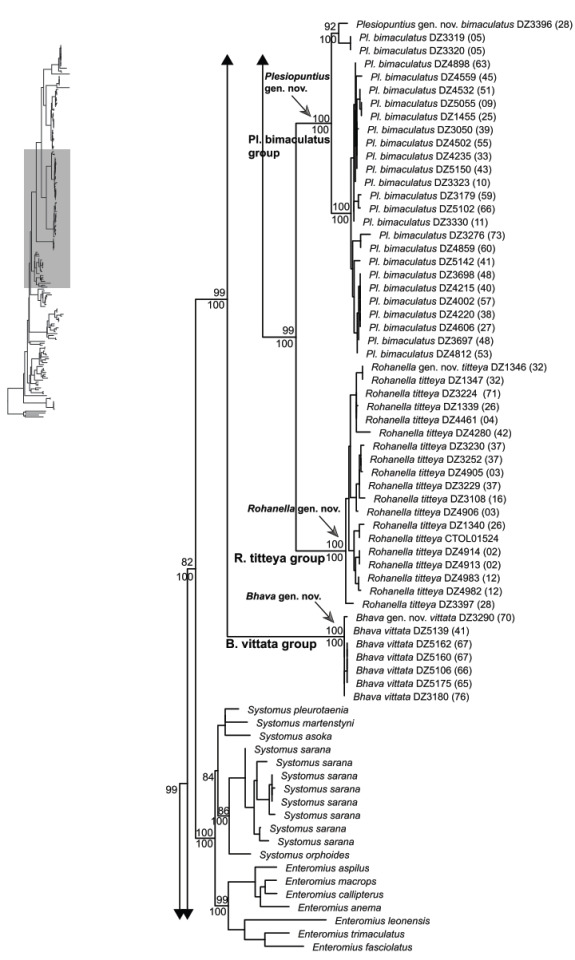

3 identified monophyletic groups that support new genera named Rohanella, Plesiopuntius and Bhava.
Puntius titteya - Rohanella

Gnathopogon bimaculatus- Plesiopuntius

Puntius vittatus- Bhava

Images from,
https://seriouslyfish.com/
Source:
https://onlinelibrary.wiley.com/doi/full/10.1111/zsc.12618
(Payment required)
0 notes
Photo

🍒🐟 . . . . . . . . . #vekkvlog #cherrybarb #barb #wildephotography #biotope #biotopeaquariums #aquarium #aquariumhobby #aquariumtank #acquariofilia #acquario #aquascape #instaaquarium #desmopumtius #ciliegie #natureaquarium #titteya #barbus #puntius #puntiustitteya #aquariumlife #plants #aquariumplants #jblproscape #barbociliegia #twinstar #fishtank #aquariumfish #cyprinidae #freshwater (presso Padua, Italy) https://www.instagram.com/p/ClYpmKUIWG5/?igshid=NGJjMDIxMWI=
#vekkvlog#cherrybarb#barb#wildephotography#biotope#biotopeaquariums#aquarium#aquariumhobby#aquariumtank#acquariofilia#acquario#aquascape#instaaquarium#desmopumtius#ciliegie#natureaquarium#titteya#barbus#puntius#puntiustitteya#aquariumlife#plants#aquariumplants#jblproscape#barbociliegia#twinstar#fishtank#aquariumfish#cyprinidae#freshwater
1 note
·
View note
Text
Ikan Tawes - Klasifikasi, Ciri Morfologi, Jenis, Habitat dan Cara Budidaya
Ikan Tawes – Klasifikasi, Ciri Morfologi, Jenis, Habitat dan Cara Budidaya
Klasifikasi Ikan tawes merupakan salah satu jenis ikan asli berasal dari Indonesia terutama nya di pulau Jawa. Hal tersebut menyebabkan Ikan tawes memiliki nama ilmiah Puntius javanicus. Namun, berubah menjadi puntius gonionotus dan terakhir berubah menjadi di Barbonymus gonionotus.
Baca: Cara Pemijahan Ikan Gabus dengan Mudah (Lengkap)
Ikan tawes memiliki nama lokal taweh atau tawas, lampam…
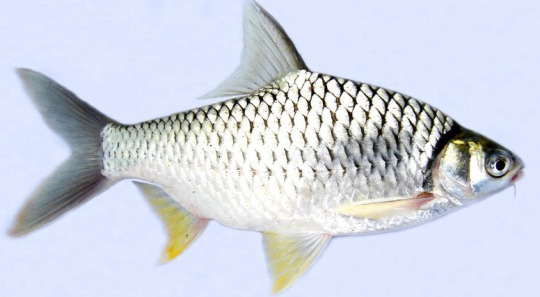
View On WordPress
0 notes
Text
BIG S/O to Timothy Kiefer on FB for sending me a vid of these endemic Philippine Barbs known locally as “Paitan” he caught in Kalawaig river (a tributary of Cagayan river) and keeps in a tank with baby koi and angel fish. His family operates a place that grows native/endemic plants and trees nearby the river.
Puntius Binotatus cf. - Philippines (mainland)
Additional photos:

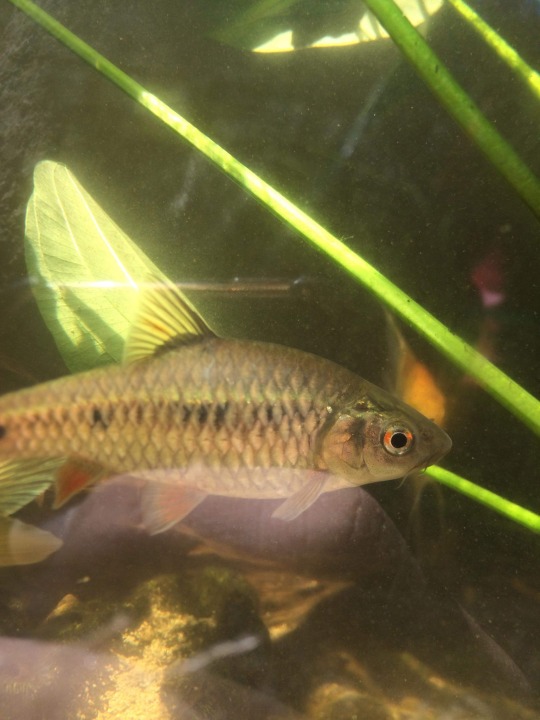

#fish#philippines#native fish#endemic fish#native#endemic#cyprinidae#cyprinids#puntius#barbodes#puntius binotatus#paitan#philippine native fish#philippine endemic fish
1 note
·
View note
Link
0 notes
Photo

These are some photos I just took using my mobile phone of my 3 year old #CheckeredBarbs that I think are again about to spawn anytime soon in my planted tank. I have successfully bred them once in the same tank without even taking out the parents and succeeded on having several babies come out alive. The trick was to have a lush carpeting plant for the eggs to hatch and the babies to hide and thrive in pristine waters. They are also great for nano tanks since they don’t grow more for more than an inch (some neon tetras are even larger than them) and are also peaceful community tank fishes and can hold their own against larger barbs like Tiger Barbs, Rosy Barbs and Odessa Barbs. Overlooked by most aquarium hobbyists for other more colorful tetras and barbs, but I think nothing beats their personality, aside from the fact that they have good temperament, they graze on green hair algae, detritus and they are not picky eaters. Originally rom Sumatra, Indonesia… they are also commonly known as #CheckerBarb or #CheckerboardBarb #OliotiusOligolepis #Puntius #PuntiusOligolepis #PlantedAquarium #Aquarium #PlantedTank (at The Mondejar Studio)
#puntiusoligolepis#plantedtank#puntius#plantedaquarium#oliotiusoligolepis#checkeredbarbs#checkerboardbarb#aquarium#checkerbarb
2 notes
·
View notes
Photo
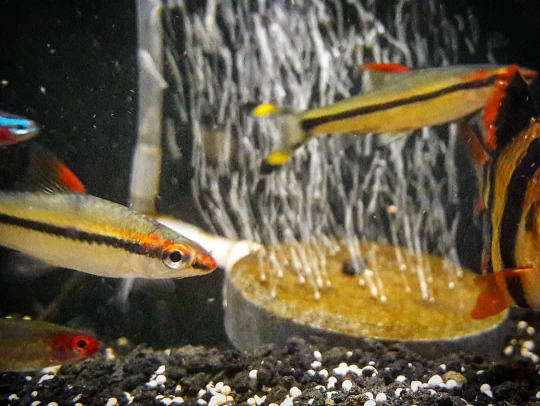
pengen pamer ikan tapi fotonya kesulitan.. . #dayswithmycamera #dayswithmytank #tipibisu #aquarium #akuarium #puntiusdenisonii #pdenisonii #puntius #denisonii #denisoni #cucimata #coolingdown #myotherhoby #hobilain #cooldown #istirahat #alterhobby https://www.instagram.com/p/CHNgkkkDYYP/?igshid=176vcxbhq7ccx
#dayswithmycamera#dayswithmytank#tipibisu#aquarium#akuarium#puntiusdenisonii#pdenisonii#puntius#denisonii#denisoni#cucimata#coolingdown#myotherhoby#hobilain#cooldown#istirahat#alterhobby
0 notes